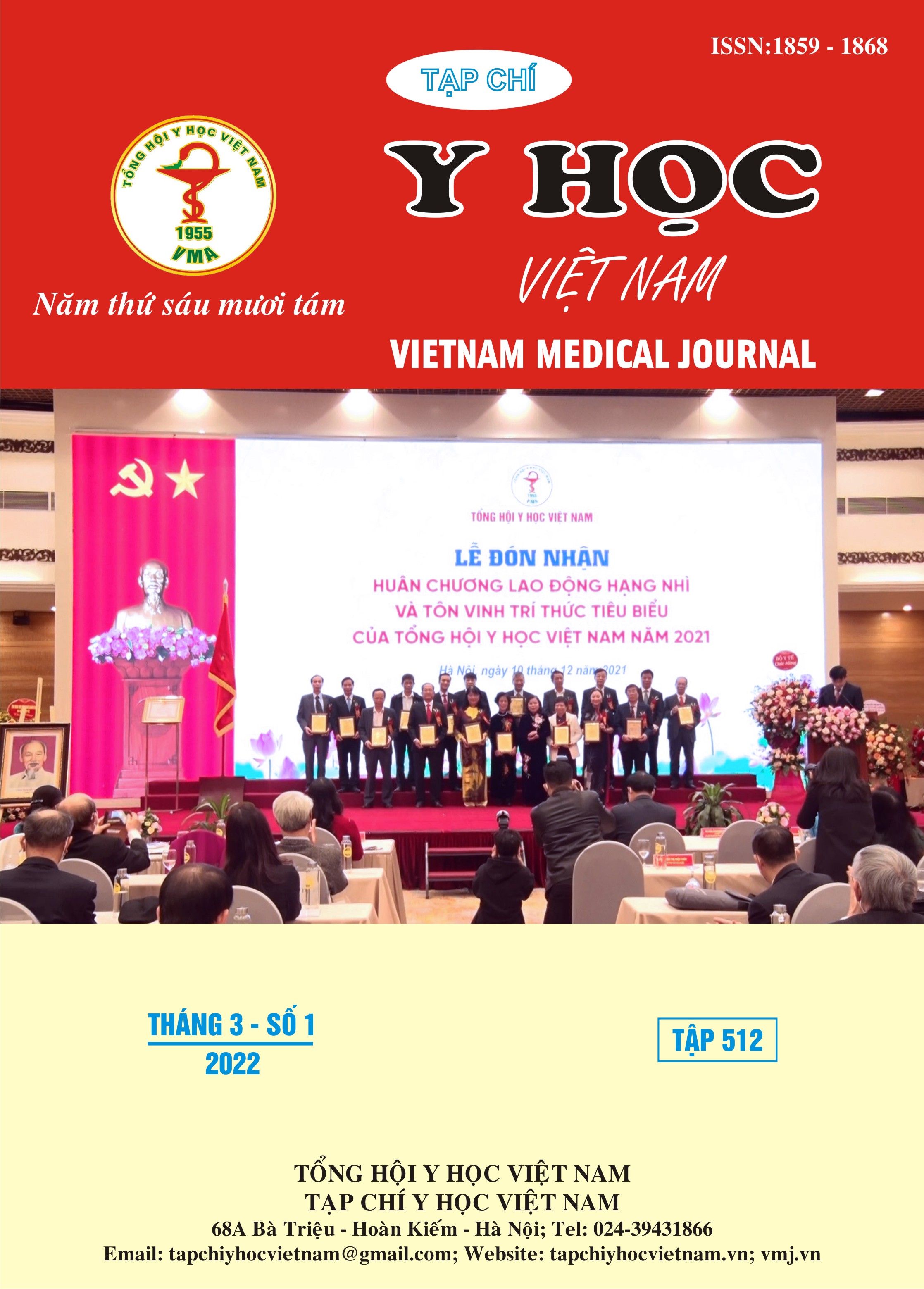INVESTIGATION SOME CLINICAL, PARACLINICAL AND BLOOD LACTATE CHARACTERISTICS IN PATIENTS WITH ACUTE HEART FAILURE WITH REDUCED EJECTION FRACTION WITHOUT CARDIOGENIC SHOCK
Main Article Content
Abstract
Objectives: To describe some clinical, paraclinical and blood lactate levels in patients with acute heart failure with reduced ejection fraction without cardiogenic shock.Study subjects: Patients diagnosed with acute heart failure with reduced ejection fraction without cardiogenic shock were treated at the Cardiology Institute, Bach Mai Hospital from May 2020 to June 2021. Research Methods: Cross-sectional descriptive. Results and conclusions: The average age of 88 study patients was 64,57 ± 14,42 years, 70,5% were male. The cause of heart failure due to coronary artery disease accounted for 62,5%, followed by hypertension (15,9%), cardiomyopathy (11,4%) and valvular heart disease (10,4%). The rate of new-onset heart failure accounted for 13,0%. Clinical features: SBP 126,4 ± 18,55 mmHg, SBP 80,68 ± 12,80 mmHg; heart rate mean 98,57 ± 16,31 beats/min; respiratory rate average 26,80 ± 4,31 times/min; SpO2 TB 92,06 ± 2,41 %; 100% of patients have wet rales; 98,9% dyspnea NYHA III, IV; 30,7% edema of the lower extremities; 29,5% hepatomegaly and 21,6% atrial fibrillation. Paraclinical characteristics: mean ejection fraction EF 27,89 ± 5,81%; average concentration of NT - proBNP 824,13 [377,30; 4138,0] pmol/L; the mean troponin T concentration was 39,81 [6,80; 130,0] ng/L; mean glomerular filtration rate 47,16 ± 20,39 ml/min, average blood lactate concentration 1,80 ± 0,71 mmol/l.
Article Details
Keywords
clinical, paraclinical, blood lactate levels, acute heart failure
References
2. Vương Thị Ánh Tuyết (2020). Đánh giá mối liên quan giữa nồng độ acid uric với tỷ lệ tử vong và tái nhập viện của bệnh nhân suy tim cấp tại Viện Tim mạch Việt Nam, Luận văn Thạc sĩ Y học, Trường Đại học Y Hà Nội.
3. Zymliński R, Biegus J, Sokolski M, et al. Increased blood lactate is prevalent and identifies poor prognosis in patients with acute heart failure without overt peripheral hypoperfusion. Eur J Heart Fail. 2018;20(6):1011-1018.
4. Uyar H, Yesil E, Karadeniz M, et al. The Effect of High Lactate Level on Mortality in Acute Heart Failure Patients With Reduced Ejection Fraction Without Cardiogenic Shock. Cardiovasc Toxicol. 2020;20(4):361-369.
5. Biegus J, Zymliński R, Sokolski M, et al. Clinical, respiratory, haemodynamic, and metabolic determinants of lactate in heart failure. Kardiol Pol. 2019;77(1):47-52.
6. Senni M, Gavazzi A, Oliva F, et al. In-hospital and 1-year outcomes of acute heart failure patients according to presentation (de novo vs. worsening) and ejection fraction. Results from IN-HF Outcome Registry. Int J Cardiol. 2014;173(2):163-169.
7. Bosso G, Mercurio V, Diab N, et al. Time-weighted lactate as a predictor of adverse outcome in acute heart failure. ESC Heart Fail. 2021;8(1):539-545.
8. Kawase T, Toyofuku M, Higashihara T, et al. Validation of lactate level as a predictor of early mortality in acute decompensated heart failure patients who entered intensive care unit. J Cardiol. 2015;65(2):164-170.


